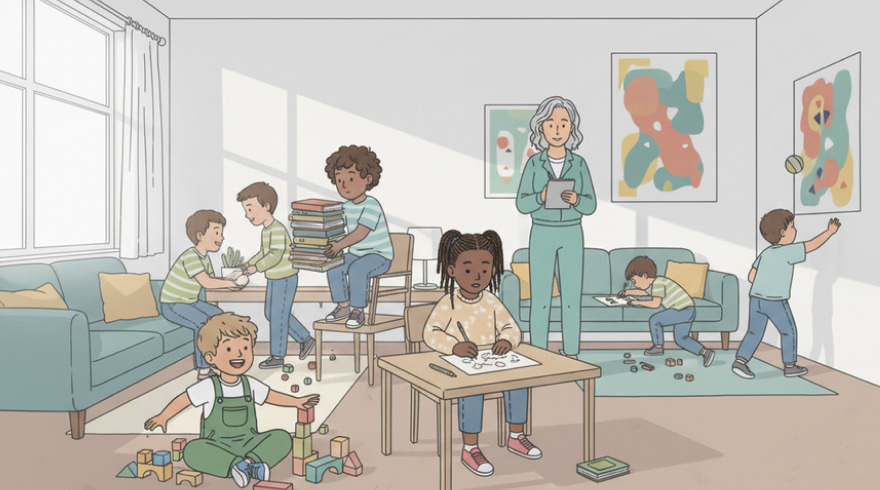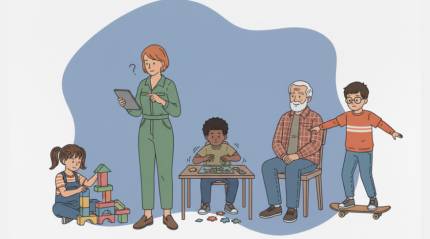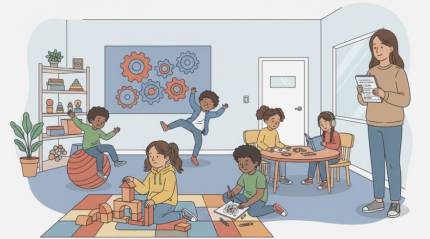Comprehensive Guide to ADHD Testing for Kids
- 23 October 2025

What ADHD Testing Involves and Why It Matters
Parents and caregivers often sense when attention, impulse control, or hyperactivity challenges are affecting daily life. A thoughtful testing process can illuminate whether these patterns align with ADHD, a neurodevelopmental condition that shows up differently for each child. Effective screening doesn’t label a child; it clarifies needs, highlights strengths, and maps next steps. Evaluations can include questionnaires, interviews, behavior observations, and cognitive tasks, all synthesized to form a reliable picture. When families understand the tools and the purpose behind them, the pathway from questions to support becomes clearer and less intimidating.
The first step usually centers on gathering information from caregivers and teachers across settings, because context reveals frequency and impact. Families often start with a pediatric screener labeled ADHD test for kids to gather initial insights, and then move toward comprehensive assessments if red flags persist. Screeners help organize observations, but only a clinical evaluation can confirm a diagnosis. Balanced testing also considers co-occurring concerns such as sleep, learning differences, anxiety, or sensory processing, reducing the risk of tunnel vision. By approaching screening as a collaborative exploration, caregivers maintain agency while clinicians ground decisions in evidence.
- Screeners contextualize behavior across home, school, and community.
- Multiple data sources reduce bias and strengthen clarity.
- Feedback sessions translate results into practical action.
Benefits of Early, Accurate Screening
Early insight gives families time to respond before patterns calcify into frustration. Children thrive when adults tailor expectations, routines, and supports to match their brain’s wiring, and testing can accelerate that alignment. The sooner caregivers understand what fuels challenging behaviors, the sooner they can redirect energy into strategies that work. Evidence-based interventions—behavioral coaching, classroom accommodations, and skill-building—are more effective when guided by targeted data. A well-run evaluation preserves strengths, reduces stigma, and centers the child’s voice.
While labels are never the goal, clarity can unlock services, and it can also disarm unhelpful narratives that frame effort as defiance. Families frequently leverage a kids ADHD test as an entry point to discuss concerns with pediatricians and schools, ensuring that support arrives in time for crucial developmental windows. The benefits ripple outward: better sleep routines, smoother transitions, improved peer dynamics, and increased academic engagement. Over time, consistent support can shore up self-esteem and build executive function skills that carry into adolescence.
- Timely accommodations reduce learning gaps and frustration.
- Personalized strategies improve organization and self-regulation.
- Coaching helps translate insights into daily habits that last.
Types of Assessments and What They Measure
Clinicians weave together multiple instruments to capture a nuanced profile. Rating scales quantify frequency of symptoms across settings; interviews explore history and context; performance tasks examine attention, processing speed, and working memory. A broad lens prevents oversight, especially when anxiety, dyslexia, or sleep problems mimic or amplify ADHD-like behaviors. Families should expect a blend of forms, conversations, and sometimes digital tasks, all interpreted against developmental norms. Comprehensive evaluation connects observable behavior with underlying cognitive processes, guiding precise, compassionate support.
Some clinics begin with standardized questionnaires, while others start with open-ended caregiver interviews. Regardless of sequence, interpretive skill matters as much as the tools themselves. A clinician may reference an ADHD test children screener to organize data, yet diagnosis requires synthesizing multiple sources to avoid false positives or negatives. The snapshot below contrasts common components to help families anticipate what each element contributes to the big picture.
| Assessment Component | Primary Purpose | Typical Duration | Who Completes It | Notes |
|---|---|---|---|---|
| Rating Scales (Parent/Teacher) | Symptom frequency across settings | 10–20 minutes each | Caregivers, educators | Norm-referenced; highlights patterns |
| Clinical Interview | History, context, functional impact | 45–90 minutes | Clinician with family | Explores strengths and concerns |
| Performance Tasks | Attention, inhibition, processing speed | 15–45 minutes | Child | Objective complement to reports |
| Neuropsych Testing | Executive function, memory, learning | 3–6 hours | Child | Useful for complex presentations |
| Observation | Behavior in natural settings | Variable | Clinician/educator | Reveals environmental triggers |
Results should be communicated in plain language, linking everyday challenges to specific strategies. Families benefit from a written report that summarizes findings, clarifies co-occurring issues, and outlines a practical plan. When the process is transparent, caregivers can partner confidently with schools and health providers to implement changes that stick.
Preparing Your Child and Family for an Assessment
Preparation reduces anxiety and improves the quality of information clinicians receive. Children do best when they know what to expect in friendly, concrete terms: “You’ll answer questions, play some thinking games, and take breaks.” Parents can gather report cards, feedback from teachers, and notes about sleep, nutrition, and routines. These details illuminate triggers, strengths, and patterns across the week. A calm schedule, snacks, and rest make testing smoother, and they also reflect typical performance rather than fatigue-driven variability.
Caregivers often rehearse coping strategies beforehand, such as deep breathing, movement breaks, or quiet fidgets, so the session feels familiar. A clinician might refer to an ADHD child test screener during intake to focus questions, but they will also invite stories that capture nuance. Practical logistics matter too: confirm location, parking, medications, and technology needs for any computer-based tasks. Finally, discuss with your child how results can help teachers and coaches support their goals, framing the assessment as a tool for success rather than a judgment.
- Bring examples of schoolwork that show both effort and difficulty.
- List situations that reliably go well and those that routinely derail.
- Plan breaks and comfort items to maintain stamina.
Understanding Results and Building a Plan
Good feedback translates data into an actionable roadmap. Clinicians should explain which behaviors met criteria, what factors may be contributing, and where uncertainty remains. Parents deserve to see how each recommendation connects to findings, which fosters buy-in and consistency at home and school. The best plans blend environmental tweaks, skill instruction, and collaboration with educators, rather than relying on a single tactic. Short-term wins build momentum, while long-term goals address executive skills like planning, time management, and emotional regulation.
Families often ask how scores influence classroom supports and home routines, and clarity here reduces trial-and-error. A parent might arrive asking about the ADHD test for my child and leave with a layered plan that includes teacher communication, structured checklists, and coaching for organization. Follow-up appointments help adjust strategies over time, especially during transitions such as a new grade or sport. When a plan evolves with the child, gains become more durable and self-advocacy grows.
- Translate each recommendation into a daily habit or cue.
- Track changes with simple metrics to see what works.
- Coordinate with school teams to align expectations.
Using Online Screeners Wisely
Digital tools can be helpful when they complement—not replace—clinical judgment. Reputable screeners explain their purpose, share validation data, and remind users that results are preliminary. Clear instructions and age-appropriate questions improve accuracy, while privacy policies protect sensitive information. Families should look for transparent scoring, next-step guidance, and suggestions for when to seek a professional evaluation. A healthy skepticism keeps convenience from overshadowing quality, especially when ads or quick fixes crowd the page.
Parents sometimes begin with a brief child ADHD test on a clinic website before booking a visit, using the output to structure a focused conversation. A thoughtful approach includes comparing results from home and school perspectives to see if concerns are consistent. When a tool offers summaries you can print or share, coordination with teachers and pediatricians becomes easier. Small steps like taking notes during the screener can pay off during the clinical interview.
Cost should never be a barrier to gathering initial observations, and many credible resources exist for families. Some caregivers appreciate a reputable ADHD test online free kids option as a first pass, especially when scheduling an appointment takes time. While free tools can be valuable, always verify the authorship, norms, and disclaimers. If a screener lacks transparency about its development, consider that a sign to look elsewhere.
Directories from hospitals, universities, and pediatric associations can help families identify well-constructed screeners. Many organizations curate lists that include vetted online ADHD tests for kids along with guidance on interpreting results responsibly. Cross-referencing multiple sources reduces the chance of relying on a low-quality tool. Look for clear statements about age ranges, validation samples, and next steps.
Practicality matters too, especially for busy families juggling routines. Some parents prefer a mobile-friendly ADHD test online for kids that saves progress and offers multilingual support, since accessibility increases completion rates. Features like reminders, printable summaries, and links to local services turn a quick check into a meaningful springboard. Regardless of platform, remember that a screener starts the conversation; it doesn’t end it.
- Check privacy policies and data retention details before starting.
- Confirm age appropriateness and cultural relevance of questions.
- Share results with a clinician to plan thorough evaluation steps.
Faq: ADHD Testing for Kids
How reliable are online ADHD screeners compared to clinical evaluations?
Screeners are designed to flag patterns worth discussing; evaluations are designed to diagnose, rule out lookalikes, and personalize care. A high-quality digital questionnaire can structure observations and prompt timely action, but it cannot substitute for clinical history, multi-informant data, and professional interpretation. Parents sometimes start with an ADHD child test online free to gather organized notes before seeing a pediatrician. The most reliable path combines preliminary screening with a comprehensive assessment that considers development, context, and co-occurring conditions.
What should I bring to the appointment to make testing more effective?
Bring teacher feedback, sample schoolwork that shows both strengths and struggles, attendance and sleep records, and notes about nutrition, screen habits, and routines. Caregiver observations about transitions, homework time, and emotional triggers are especially useful. If your child uses strategies like visual schedules or fidgets, describe what helps and what doesn’t. Medication lists, prior evaluations, and relevant medical history give clinicians a fuller picture, improving the accuracy of recommendations and reducing the need for repeat visits.
Can my school use results from a home screener to provide accommodations?
Schools typically require formal documentation to implement accommodations, but thoughtful collaboration can begin with shared observations. Caregivers may present a well-regarded child ADHD test online printout as a springboard for discussion, emphasizing that it’s preliminary. Many districts will initiate their own assessments or accept documentation from a licensed clinician. The more specific the data about functional impact, the easier it is to translate insights into classroom supports that are both practical and measurable.
How do clinicians differentiate ADHD from anxiety, learning issues, or sleep problems?
Clinicians triangulate multiple data sources to disentangle overlapping symptoms. They examine onset, duration, and contexts of inattention or restlessness; they also probe nighttime routines, reading and math skills, and stressors that can masquerade as ADHD. Performance tasks and developmental history help identify root causes, while rating scales align observations across settings. Differential diagnosis is a process of elimination and synthesis, which is why comprehensive evaluation beats quick conclusions.
What are smart next steps after a positive screener result?
Schedule an appointment with your pediatrician or a child psychologist to discuss the findings and map an evaluation plan. Organize examples of daily challenges and successes so the clinician sees a complete picture. Families who prefer a digital start often pick a validated ADHD test for children online first, then use results to make the clinical intake more targeted. From there, collaborate on supports at home and school, track changes, and adjust strategies as your child grows and contexts shift.



